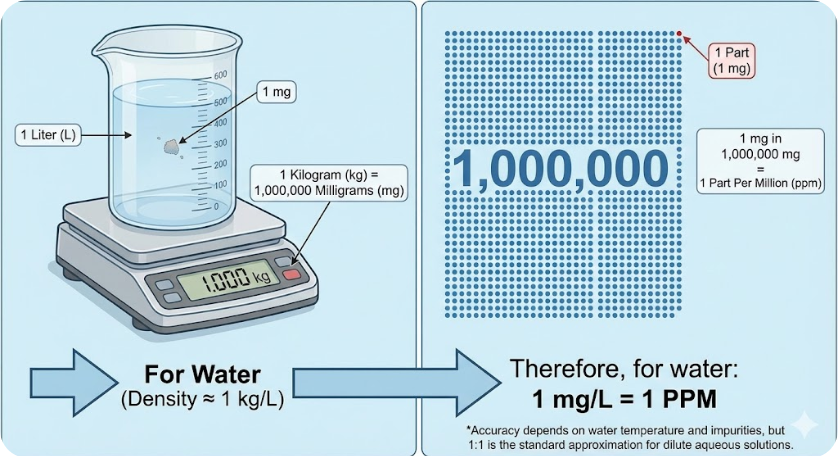mg/L to PPM Calculator
Milligrams per Liter to PPM Calculator – Accurate Chemical Conversion Tool
Quickly convert mg/L to PPM with this accurate calculator. Ideal for water testing, chemistry, aquariums, agriculture, and environmental analysis. Supports mg/L, mg/kg, and ppm conversions.
Are you a chemist, an environmental scientist, or a hydroponic grower? You often encounter data in milligrams per liter (mg/L) but need to work in parts per million (PPM). While these two units are often used interchangeably, it’s important to understand the nuance.
Our mg/L to PPM Calculator offers a fast, accurate solution for this common conversion, simplifying your workflow and ensuring precision in your work.
What is the Relationship Between mg/L and PPM?
This is a frequently asked question, and the answer is surprisingly simple for most common applications.
- mg/L: This is a measure of mass concentration, specifically the number of milligrams of a substance dissolved in one liter of solution.
- PPM (Parts Per Million): This is a ratio that expresses a very small concentration. It represents one part of a substance for every one million parts of the solution.
The key to the conversion lies in the density of the solution. For aqueous solutions (those where water is the solvent), the density is very close to 1 kg/L. Given that 1 kg is equal to 1,000,000 mg, this creates a simple and direct relationship.
For water and dilute aqueous solutions: 1 mg/L=1 mg per 1,000,000 mg=1 PPM
Therefore, for all practical purposes in fields like water quality testing or hydroponics, the numerical value is the same. A concentration of 50 mg/L is equal to 50 PPM. Our calculator is built on this principle, making the conversion instant and reliable.

How to Convert mg/L to PPM
While the direct conversion is a 1:1 ratio for most water-based applications, using a calculator ensures accuracy and saves time. Our tool is designed to answer questions like:
- “What is the PPM of my fertilizer solution if my test kit reads 450 mg/L of nitrate?”
- “My water quality report shows a lead concentration of 0.02 mg/L. What is that in PPM?”
Simply input your concentration in milligrams per liter, and the calculator will display the equivalent value in PPM. This is incredibly useful for:
- Environmental Monitoring: Quickly comparing test results to regulatory standards, which are often expressed in PPM. For example, the EPA sets drinking water limits in PPM.
- Hydroponics & Aquaponics: Managing nutrient solutions requires precise control. Converting test results from a Hanna meter or similar device into PPM helps you maintain optimal nutrient levels for your plants.
- Wastewater Treatment: Evaluating the concentration of pollutants and ensuring discharge levels are within compliance.
By using our straightforward mg/L to PPM calculator, you eliminate the need for manual calculations, reduce the chance of error, and gain confidence in your data.
